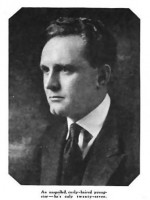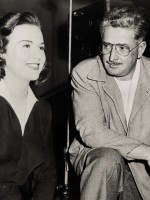Margaret Sullavan is a Actor American born on 16 may 1909 at Norfolk (USA)
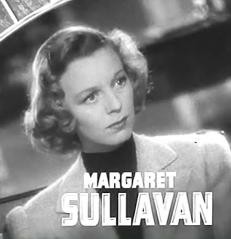
Margaret Brooke Sullavan (May 16, 1909 – January 1, 1960) was an American stage and film actress.
Sullavan began her career onstage in 1929. In 1933 she caught the attention of movie director John M. Stahl and had her debut on the screen that same year in Only Yesterday. Sullavan preferred working on the stage and made only 16 movies, four of which were opposite James Stewart in a popular partnership. She was nominated for an Academy Award for Best Actress for her performance in Three Comrades (1938). She retired from the screen in the early forties, but returned in 1950 to make her last movie, No Sad Songs for Me (1950), in which she played a woman who was dying of cancer. For the rest of her career she would only appear on the stage.
Sullavan experienced increasing hearing problems, depression, and mental frailty in the 1950s. She died of an overdose of barbiturates, which was ruled accidental, on January 1, 1960 at the age of 50.
Marriages and family
Sullavan was married four times. She married Henry Fonda on December 25, 1931 in Baltimore, while both were performing with the University Players in its 18-week winter season there. She was exactly four years Fonda's junior: they shared the birth date of May 16. The marriage lasted only two months.
Sullavan was then involved with Broadway producer Jed Harris for some time. In late 1934, she married William Wyler, the director of her next movie, The Good Fairy (1935). Her second marriage lasted just over a year and they divorced in March 1936.
Sullavan's third husband was agent and producer Leland Hayward. Hayward had been Sullavan's agent since 1931 and their relationship had been deepening all through 1936; they had already become lovers, and Brooke, their "love child", had been conceived that October. They both wanted the baby and married on November 15, 1936. Sullavan would have a baby every other year - Brooke in 1937, Bridget in 1939 (who died of a drug overdose in October 1960) and Bill in 1941 (who committed suicide in 2008). Their marriage lasted about 11 years and ended when Sullavan discovered that Hayward was cheating on her with Slim Keith. At Sullavan's insistence, she and Hayward divorced in 1947.
Three years after divorcing Hayward, she married Kenneth Wagg, an English investment banker, to whom she was married at the time of her death.
Hearing loss
Sullavan suffered from the congenital hearing defect otosclerosis that worsened as she aged, making her more and more hard of hearing. Her voice had developed a throatiness because she could hear low tones better than high ones. From early 1957 Sullavan's hearing was worsening; she was becoming depressed and sleepless and often wandered about all night. She would often go to bed and stay there for days, her only words: "Just let me be, please". Sullavan had kept her hearing problem largely hidden. On January 8, 1960 (one week after Sullavan's death), The New York Post reporter Nancy Seely wrote: "The thunderous applause of a delighted audience—was it only a dim murmur over the years to Margaret Sullavan? Did the poised and confident mien of the beautiful actress mask a sick fear, night after night, that she'd miss an important cue?" In addition to her hearing defect, Sullavan's children, Brooke, and in particular Bridget and Bill, often proved rebellious and contrary. As a result of the divorce from Hayward, the family fell apart. Sullavan felt that Hayward was trying to alienate their children from her. When the children went to California to visit their father they were so spoiled with expensive gifts that, when they returned to their mother in Connecticut, they were deeply discontented with what they saw as a staid lifestyle.
By 1955, when Sullavan's two younger children told their mother that they preferred to stay with their father permanently, she suffered a nervous breakdown. Sullavan's older daughter, Brooke, wrote about the breakdown in her 1977 autobiography Haywire: Sullavan had humiliated herself by begging her son to stay with her. He remained adamant and his mother had started to cry. "This time she couldn't stop. Even from my room the sound was so painful I went into my bathroom and put my hands on my ears". In another scene from the book, a friend of the family (Millicent Osborne) had been alarmed by the sound of whimpering from the bedroom: "She walked in and found mother under the bed, huddled up in a fetal position. Kenneth was trying to get her out. The more authoritative his tone of voice, the farther under she crawled. Millicent Osborne took him aside and urged him to speak gently, to let her stay there until she came out of her own accord". Eventually Sullavan agreed to spend some time (two and a half months) in a private mental institution. Her two younger children also spent time in various institutions.
Source : Wikidata
Margaret Sullavan

Birth name Margaret Brooke Sullavan
Nationality USA
Birth 16 may 1909 at Norfolk (USA)
Death 1 january 1960 (at 50 years) at New Haven (USA)
Nationality USA
Birth 16 may 1909 at Norfolk (USA)
Death 1 january 1960 (at 50 years) at New Haven (USA)
Sullavan began her career onstage in 1929. In 1933 she caught the attention of movie director John M. Stahl and had her debut on the screen that same year in Only Yesterday. Sullavan preferred working on the stage and made only 16 movies, four of which were opposite James Stewart in a popular partnership. She was nominated for an Academy Award for Best Actress for her performance in Three Comrades (1938). She retired from the screen in the early forties, but returned in 1950 to make her last movie, No Sad Songs for Me (1950), in which she played a woman who was dying of cancer. For the rest of her career she would only appear on the stage.
Sullavan experienced increasing hearing problems, depression, and mental frailty in the 1950s. She died of an overdose of barbiturates, which was ruled accidental, on January 1, 1960 at the age of 50.
Biography
Sullavan had a reputation of being both temperamental and straightforward. On one occasion Henry Fonda (then her ex-husband) had decided to take up a collection for a fireworks display on July 4. When Sullavan refused to make a contribution, Fonda complained loudly to a fellow actor. Then Sullavan rose from her seat and doused Fonda from head to foot with a pitcher of ice water. Fonda made a stately exit, and Sullavan, composed and unconcerned, returned to her table and ate heartily. Another of her blowups almost literally killed Sam Wood, one of the founders of the Motion Picture Alliance. Wood was a keen anti-Communist. He dropped dead from a heart attack shortly after a raging argument with Sullavan, who had refused to fire a writer on a proposed film on account of his left-wing views. Louis B. Mayer always seemed wary and nervous in her presence. "She was the only player who outbullied Mayer", Eddie Mannix of MGM later said of Sullavan. "She gave him the willies".Marriages and family
Sullavan was married four times. She married Henry Fonda on December 25, 1931 in Baltimore, while both were performing with the University Players in its 18-week winter season there. She was exactly four years Fonda's junior: they shared the birth date of May 16. The marriage lasted only two months.
Sullavan was then involved with Broadway producer Jed Harris for some time. In late 1934, she married William Wyler, the director of her next movie, The Good Fairy (1935). Her second marriage lasted just over a year and they divorced in March 1936.
Sullavan's third husband was agent and producer Leland Hayward. Hayward had been Sullavan's agent since 1931 and their relationship had been deepening all through 1936; they had already become lovers, and Brooke, their "love child", had been conceived that October. They both wanted the baby and married on November 15, 1936. Sullavan would have a baby every other year - Brooke in 1937, Bridget in 1939 (who died of a drug overdose in October 1960) and Bill in 1941 (who committed suicide in 2008). Their marriage lasted about 11 years and ended when Sullavan discovered that Hayward was cheating on her with Slim Keith. At Sullavan's insistence, she and Hayward divorced in 1947.
Three years after divorcing Hayward, she married Kenneth Wagg, an English investment banker, to whom she was married at the time of her death.
Hearing loss
Sullavan suffered from the congenital hearing defect otosclerosis that worsened as she aged, making her more and more hard of hearing. Her voice had developed a throatiness because she could hear low tones better than high ones. From early 1957 Sullavan's hearing was worsening; she was becoming depressed and sleepless and often wandered about all night. She would often go to bed and stay there for days, her only words: "Just let me be, please". Sullavan had kept her hearing problem largely hidden. On January 8, 1960 (one week after Sullavan's death), The New York Post reporter Nancy Seely wrote: "The thunderous applause of a delighted audience—was it only a dim murmur over the years to Margaret Sullavan? Did the poised and confident mien of the beautiful actress mask a sick fear, night after night, that she'd miss an important cue?" In addition to her hearing defect, Sullavan's children, Brooke, and in particular Bridget and Bill, often proved rebellious and contrary. As a result of the divorce from Hayward, the family fell apart. Sullavan felt that Hayward was trying to alienate their children from her. When the children went to California to visit their father they were so spoiled with expensive gifts that, when they returned to their mother in Connecticut, they were deeply discontented with what they saw as a staid lifestyle.
By 1955, when Sullavan's two younger children told their mother that they preferred to stay with their father permanently, she suffered a nervous breakdown. Sullavan's older daughter, Brooke, wrote about the breakdown in her 1977 autobiography Haywire: Sullavan had humiliated herself by begging her son to stay with her. He remained adamant and his mother had started to cry. "This time she couldn't stop. Even from my room the sound was so painful I went into my bathroom and put my hands on my ears". In another scene from the book, a friend of the family (Millicent Osborne) had been alarmed by the sound of whimpering from the bedroom: "She walked in and found mother under the bed, huddled up in a fetal position. Kenneth was trying to get her out. The more authoritative his tone of voice, the farther under she crawled. Millicent Osborne took him aside and urged him to speak gently, to let her stay there until she came out of her own accord". Eventually Sullavan agreed to spend some time (two and a half months) in a private mental institution. Her two younger children also spent time in various institutions.
Usually with
Filmography of Margaret Sullavan (19 films)
Actress
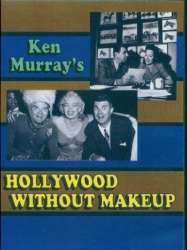
Hollywood Without Make-Up (1963)
Directed by Ken Murray
Origin USA
Genres Documentary
Themes Documentary films about business, Documentary films about the film industry, Documentary films about cities
Actors Kirk Douglas, Ken Murray, Cary Grant, June Allyson, George K. Arthur, Eddie Albert
Roles Self (archive footage)
Rating71%





The film consists of archive footage of famous Hollywood stars, mostly home movies showing the stars as themselves instead of playing a role in front of the camera.
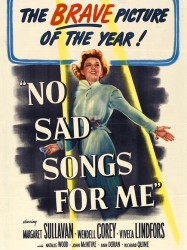
No Sad Songs for Me (1950)
, 1h28Directed by Rudolph Maté
Origin USA
Genres Drama
Actors Margaret Sullavan, Wendell Corey, Viveca Lindfors, Natalie Wood, John McIntire, Richard Quiney
Roles Mary Scott
Rating66%





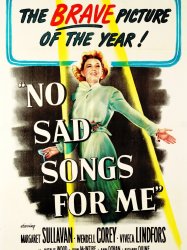
No Sad Songs for Me (1950)
, 1h28Directed by Rudolph Maté
Origin USA
Genres Drama
Actors Margaret Sullavan, Wendell Corey, Viveca Lindfors, Natalie Wood, John McIntire, Ann Doran
Roles Mary Scott
Rating66%





Entre son mari Bradford Scott, géomètre de son métier, et sa fille Polly, Mary Scott est une femme heureuse. D'ailleurs, elle se croit à nouveau enceinte et va consulter le docteur Ralph Frene, un ami de la famille. Ce dernier lui annonce que tel n'est pas le cas et que, d'après les examens poussés qu'il lui a fait passer, elle est atteinte d'un cancer incurable. Mary apprend l'horrible vérité: elle n'a plus que dix mois à vivre…

Cry 'Havoc' (1943)
, 1h37Directed by Richard Thorpe
Origin USA
Genres Drama, War
Themes Seafaring films, Théâtre, Transport films, Political films, Films based on plays
Actors Margaret Sullavan, Ann Sothern, Joan Blondell, Fay Bainter, Marsha Hunt, Ella Raines
Roles Lieutenant Smith
Rating68%





The film tells the story of a mixed group of Army nurses stationed in Bataan during World War II. At the beginning of the film, the head nurse, Lt. Mary Smith (Margaret Sullavan) begs her superior, Capt. Alice Marsh (Fay Bainter) for more nurses to help deal with the excessive workload, but instead of professional nurses, she is assigned a group of civilians from various backgrounds. They lack experience and require training and find it difficult to settle in. Pat Conlin (Ann Sothern) rebels against Lt. Smith's strict nature, but the group begin to reveal stories from their past and become better acquainted. They also meet a male officer, Lt. Holt (Allan Byron), and Pat becomes infatuated with him, leading to jealousy between her and Lt. Smith who refuses to explain why she is offended by Pat's attention to him. During an air-raid one of the volunteers, Sue West (Dorothy Morris), is separated from the group, and some of the women, including her sister Andra (Heather Angel) search for her. After three days she is found alive, having spent the time trapped in a hut with the corpses of several soldiers who were killed during the attack.
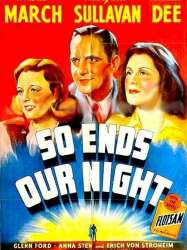
So Ends Our Night (1941)
, 1h57Directed by John Cromwell
Origin USA
Genres Drama, War
Themes Political films
Actors Fredric March, Margaret Sullavan, Glenn Ford, Frances Dee, Anna Sten, Erich von Stroheim
Roles Ruth Holland
Rating67%





The story begins in 1937 Austria, before the German occupation which would arrive the following year. Josef Steiner (Fredric March) is a middle-aged German veteran who has been an ideological opponent to the Nazi regime from its inception and already escaped from two years in a concentration camp. He's in hiding in a dodgy Austrian boarding house with young Ludwig Kern (Glenn Ford in an early and outstanding performance), a bewildered 19-year-old German from a prosperous family that was found to have Jewish forebears when the Nazis came to power and now "half-Aryan," are abruptly deprived of their German citizenship and passports, rendered stateless and ordered to leave the country.
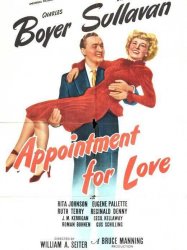
Appointment for Love (1941)
, 1h29Directed by William A. Seiter
Origin USA
Genres Comedy, Romantic comedy, Romance
Actors Charles Boyer, Margaret Sullavan, Rita Johnson, Eugene Pallette, Ruth Terry, Reginald Denny
Roles Jane Alexander
Rating59%






Back Street (1941)
, 1h29Directed by Robert Stevenson
Origin USA
Genres Drama
Actors Charles Boyer, Margaret Sullavan, Richard Carlson, Frank McHugh, Tim Holt, Frank Jenks
Roles Ray Smith
Rating66%





The film is set in the early 1900s. It tells the story of a pretty and independent young woman, Rae Smith, who lives in Cincinnati. She has many suitors, none of whom she takes seriously. One day she meets an extremely charming and handsome banker named Walter Louis Saxel, and they fall immediately into a strong attraction, which for her is real love. After a few days of closeness she is shocked when he tells her he is already engaged to someone else. Nonetheless the two of them very nearly marry one another on an impulse, but they are prevented from doing so by arbitrary external forces.

The Mortal Storm (1940)
, 1h40Directed by Frank Borzage
Origin USA
Genres Drama
Themes Documentary films about war, Documentary films about historical events, Political films, Documentary films about World War II
Actors Margaret Sullavan, James Stewart, Robert Young, Frank Morgan, Robert Stack, Bonita Granville
Roles Freya Roth
Rating76%





In 1933, Freya Roth (Margaret Sullavan) is a young German girl engaged to a Nazi party member (Robert Young). When she realizes the true nature of his political views she breaks the engagement and turns her attention to anti-Nazi Martin Breitner (James Stewart). Her father, Professor Roth (Frank Morgan), does not abide by the attitude of the new order towards scientific fact.

The Shop Around the Corner (1940)
, 1h39Directed by Ernst Lubitsch
Origin USA
Genres Drama, Comedy, Romantic comedy, Romance
Themes Christmas films, Films based on plays
Actors Margaret Sullavan, James Stewart, Frank Morgan, Joseph Schildkraut, Sara Haden, William Tracy
Roles Klara Novak
Rating80%





Alfred Kralik (James Stewart) is the top salesman at a leathergoods shop in Budapest owned by the high-strung Mr. Hugo Matuschek (Frank Morgan). Kralik's coworkers at Matuschek and Company include his friend, Pirovitch (Felix Bressart), a kindly family man; Ferencz Vadas (Joseph Schildkraut), a two-faced womanizer; and Pepi Katona (William Tracy), an ambitious, precocious delivery boy. One morning, Kralik reveals to Pirovitch that he's been corresponding anonymously with an intelligent and cultured woman whose ad he came across in the newspaper.

The Shining Hour (1938)
, 1h16Directed by Frank Borzage
Origin USA
Genres Drama, Romance
Themes Théâtre, Films based on plays
Actors Joan Crawford, Margaret Sullavan, Robert Young, Melvyn Douglas, Fay Bainter, Allyn Joslyn
Roles Judy Linden
Rating63%





Olivia Riley (Joan Crawford), a New York City nightclub dancer, tires of the fast life and consents to marry Henry Linden (Melvyn Douglas), a wealthy farmer from Wisconsin. Even before they engage to be married, however, Henry's brother David (Robert Young) is sent to New York by their domineering sister Hannah (Fay Bainter) to dissuade him from marrying Olivia. In private, Olivia slaps David when her integrity is questioned, but she marries Henry because she says he's the only person in her life who is endlessly positive. When Olivia moves to her new husband's farm in Wisconsin, she encounters trouble from her sister-in-law Hannah, who does not approve of her. Olivia finds an ally in David's wife, Judy (Margaret Sullavan), who is in a loveless marriage.
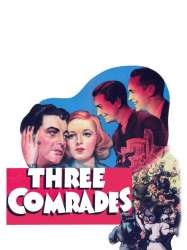
Three Comrades (1938)
, 1h40Directed by Frank Borzage
Origin USA
Genres Drama, Romance
Actors Robert Taylor, Margaret Sullavan, Franchot Tone, Robert Young, Lionel Atwill, Henry Hull
Roles Patricia Hollmann
Rating70%





Trois vétérans de la guerre (Robert Taylor, Franchot Tone et Robert Young) rentrent dans Berlin ruinée et prête à succomber aux sirènes du nazisme. Ils sont tous trois amoureux de Patricia Hollmann (Margaret Sullavan).
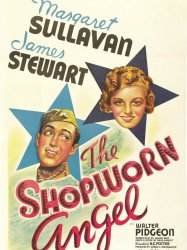
The Shopworn Angel (1938)
, 1h25Directed by H. C. Potter
Origin USA
Genres Drama, War, Romance
Themes Political films
Actors James Stewart, Margaret Sullavan, Walter Pidgeon, Hattie McDaniel, Gary Cooper, Nat Pendleton
Roles Daisy Heath
Rating68%





After the United States enters World War I in 1917, the limousine carrying Daisy Heath (Margaret Sullavan), a sophisticated Broadway musical theatre star, knocks down Bill Pettigrew (James Stewart), a naive young soldier from Texas. A policeman orders the chauffeur to take Bill back to camp. During the ride, he becomes slightly acquainted with the cynical, but not cold-hearted Daisy.

I Loved a Soldier (1936)
Directed by Henry Hathaway
Origin USA
Genres Drama, Comedy-drama, Romantic comedy
Themes Théâtre, Films based on plays
Actors Marlene Dietrich, Charles Boyer, Walter Catlett, Lionel Stander, Margaret Sullavan, Akim Tamiroff
Rating64%





The film tells the story of a young servant girl (Marlene Dietrich) who works at Hotel Imperial. One day, she falls in love with a known customer who turns out be a soldier (Charles Boyer), locally known as the ultimate ladies man.
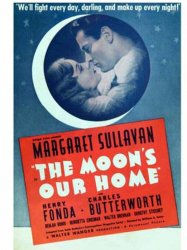
The Moon's Our Home (1936)
, 1h20Directed by William A. Seiter
Origin USA
Genres Comedy, Romantic comedy
Actors Henry Fonda, Margaret Sullavan, Walter Brennan, Charles Butterworth, Henrietta Crosman, Beulah Bondi
Roles Cherry Chester / Sarah Brown
Rating65%





A comedy about marriage and everything relating to it. New York novelist Henry Fonda meets up with an actress, Margaret Sullavan, and the two date and later marry, though neither knows of the other's fame. The real adventure begins on the honeymoon, when this screwball comedy really heats up with insults and arguments.
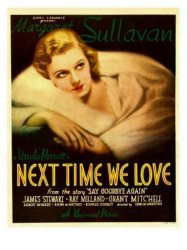
Next Time We Love (1936)
, 1h27Directed by Edward H. Griffith
Origin USA
Genres Drama, Romance
Actors Margaret Sullavan, James Stewart, Ray Milland, Grant Mitchell, Hattie McDaniel, Robert McWade
Roles Cicely
Rating63%





Aspiring actress Cicely Tyler (Margaret Sullavan) marries ambitious newsman Christopher Tyler (James Stewart) but their life together is interrupted when he is assigned to a good position in his newspaper's Rome bureau, and she stays behind, confiding to her rich secret admirer, Tommy Abbott (Ray Milland), that she is pregnant. Separations, reunions and reconciliations follow as Cicely and Christopher struggle to balance their romance and their careers.
 Connection
Connection

